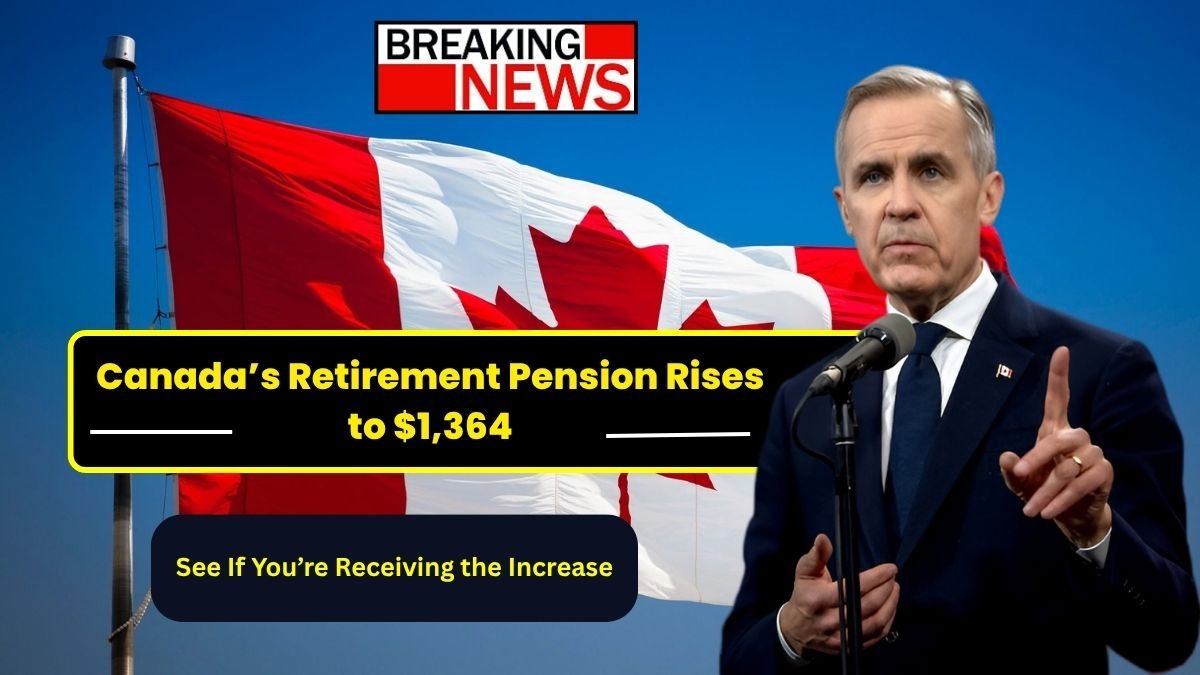If you’re retired or getting ready to retire in Canada, you’re in for some good news. In 2025, retirees can expect higher monthly income from federal programs like the Canada Pension Plan (CPP) and Old Age Security (OAS). These increases come just in time to help seniors manage the rising costs of everyday life—everything from groceries and medicine to heating bills and transit fares.
Here’s a simple breakdown of what you can expect:
| Program | Maximum Monthly Amount (2025) |
|---|---|
| CPP | $1,433 |
| OAS (65–74) | $727.67 |
| OAS (75+) | $800.44 |
| Combined CPP + OAS (75+) | $2,233.44 |
That means if you’re aged 75 or above and entitle to both the full CPP and OAS amounts, your federal retirement income could hit $2,233.44 each month—or about $26,800 per year. For many seniors, that extra income has a real impact on day‑to‑day budgeting.
Canada Pension Plan (CPP)

What It Is and How It Works
CPP is your retirement plan funded by contributions from you and your employer during your working years. When it’s time, CPP becomes a reliable monthly income based on three key factors:
- How much you’ve contributed over the years
- How long you contributed (i.e. number of working years)
- The age you decide to start receiving it
In 2025, the maximum monthly CPP pension for someone starting at age 65 is $1,433. That’s what you get if you worked long enough and made maximum contributions. But for many people, that’s not realistic. The average CPP payment currently sits around $808 a month.
Timing Matters
- You can start between ages 60 and 70.
- For each month you wait past 65, your CPP increases by roughly 0.7%.
- Delay until age 70, and you could see a total increase of over 40% compared to taking it at 65.
So, someone eligible for $800 at 65 might get around $1,120 if they wait until 70. If you’re in good health and don’t need the income right away, waiting could significantly boost your lifetime payout.
Old Age Security (OAS)
What It Is and Who Qualifies
OAS is different because it’s not tied to work or contributions. It’s based on age and residency in Canada:
- You must be 65 or older.
- You must have lived in Canada for at least 10 years after age 18 for partial benefits, or 40 years for the full amount.
In 2025, the monthly OAS rates are:
- $727.67 if you’re 65 to 74 years old.
- $800.44 once you turn 75 and older.
These amounts are adjusted quarterly based on inflation, using the Consumer Price Index to keep pace with cost-of-living increases.
Putting It All Together
A retiree over 75 with the maximum CPP and OAS is looking at $2,233.44 monthly. That’s a strong foundational income before considering other benefits such as the Guaranteed Income Supplement (GIS) for low-income seniors, or tax refunds like the GST credit.
Example: Helen’s Story
Let’s meet Helen. She’s now 70 and has a mix of work and family years—30 years working full-time, followed by a 10-year career break caring for her children. She chooses to start CPP and OAS right away, receiving:
- $970 per month from CPP
- $800.44 per month from OAS
- Total: $1,770.44 per month
In addition, Helen qualifies for some GIS, reinforcing her financial security in retirement.
Key Tips & Strategies
1. Consider Delaying CPP
If you’re in good health, waiting until age 70 can add that 40% boost to your CPP payments. Many retirees find that extra monthly amount more valuable than starting early.
2. Know Your OAS Triggers
OAS increases by 0.6% per month for each month you delay past 65 (up to age 70)—giving you up to a 36% increase. Make sure to compare how much extra you’d get versus what you could earn from working longer or investing in an RRSP/TFSA.
3. Review Your Contributions
Log into your My Service Canada Account to view your CPP contributions. Accuracy is crucial—if something’s missing or incorrect, amounts can suffer. It’s smart to correct errors well in advance of applying for benefits.
4. Apply for GIS
The Guaranteed Income Supplement can provide up to $1,065 per month for single seniors with limited income—on top of CPP and OAS. Married seniors can qualify for lower amounts depending on combined income.
5. Practice Pension Income Splitting
If your spouse receives higher CPP income, you might benefit from splitting up to 50%—this can lower your overall tax bracket. Talk to a financial planner to see if this is a smart move.
6. Watch for OAS Clawbacks
Be cautious once your adjusted net income exceeds $90,997 in 2025. OAS payments begin to get reduced—or “clawed back”—so income planning is essential.
7. Keep Working Thoughtfully
If you claim CPP before 65 and continue to work, your contributions go into the Post‑Retirement Benefit, boosting future payments. Keep in mind that OAS isn’t tied to employment, but it could still be affected by CLAWBACK if your income rises too much.
Beyond CPP and OAS

Retirement planning isn’t just about these two benefits. You’ll want to factor in:
- Registered Retirement Savings Plans (RRSPs)
- Tax-Free Savings Accounts (TFSAs)
- Employer pensions
- Other provincial benefits
As Clara Lee, a certified financial planner with RetireSmart Canada, puts it:
“CPP and OAS are only one part of the retirement puzzle. You need RRSPs, TFSAs, workplace pensions, and GIS to create a full picture.”
James Murray, a CPA and retirement planner in Ottawa, adds:
“Delaying your benefits can have huge upside, especially if you expect to live well into your eighties or nineties. Don’t take them just because you can—consider the long term.”
What You Can Do Now
- Open your My Service Canada Account to review CPP and OAS history.
- Run the Retirement Income Calculator available on Canada.ca.
- Make key decisions: When do you want to start CPP and/or delay OAS?
- Apply early—CPP applications can be done online up to 12 months before you want payments to start.
- Speak with a financial planner or tax advisor, especially about pension splitting or OAS clawbacks.
Final Thoughts
The combined increases to CPP and OAS in 2025 are a welcome boost for Canadian retirees coping with cost-of-living pressures. These benefits form steady pillars in your retirement income. But knowing how they work, planning timing, and ensuring you get every dollar you’re due can sharpen your financial footing even further.
Retirement is a big chapter—make it a stable one. Here’s to smart decisions now that build the security and independence you deserve.
FAQs
1. What is the new retirement pension amount in Canada for 2025?
The maximum Canada Pension Plan (CPP) retirement benefit has increased to $1,364 per month for eligible recipients.
2. Is the CPP pension taxable?
Yes, CPP payments are considered taxable income and must be reported when filing your taxes.
3. Is everyone getting the $1,364 increase?
No. Most people will receive less than the maximum, depending on their work history and contribution amounts.
4. How can I check how much CPP I will receive?
You can log into your My Service Canada Account (MSCA) to view your personal CPP estimate and payment details.
5. When did the new rate take effect?
The increase took effect in January 2025, and applies to all eligible monthly payments issued this year.


